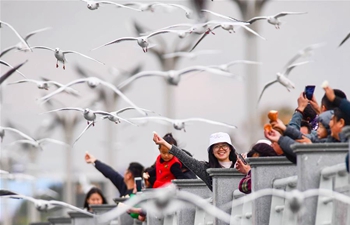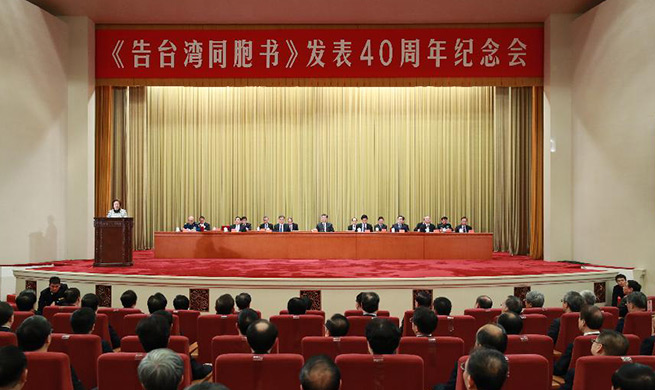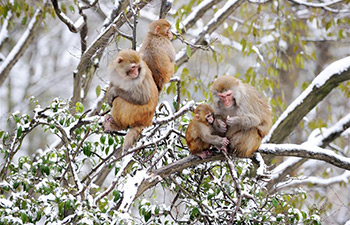GUIYANG, Jan. 2 (Xinhua) -- Wu Defen paints fast. Within 30 minutes she can finish a phoenix on a piece of cloth, using melting wax and a spatula-like tool.
The cloth is dyed before being heated to get rid of the wax, with the coats of wax leaving a pattern behind.
Batik is an ancient traditional craft common among a number of ethnic groups in China.
"I started learning batik when I was 4 years old," said Wu, batik maker in Anshun City of Guizhou Province in southwest China.
Anshun is best known for its batik craftsmanship. Batik, both an art and a craft, is becoming a source of wealth for local people.
Wu was picked by a company making batik 27 years ago. She was sent to Beijing and studied batik for 5 years.
Making batik became her job after she returned home with much improved skills.
"Techniques involved are intricate and such steps as spinning, weaving, waxing and dyeing really matter," she said.
When she noticed that cloth woven with traditional cotton yarn was stiff and did not appeal to customers, she turned to weaving cloth with cotton and flax.
"Batik with improved cloth sells better," Wu said.
In 2013, Guizhou initiated a plan to encourage females to start businesses featuring local crafts and create jobs for poverty-stricken families. Anshun chose batik as its main industry.
Guizhou is on the frontline of China's anti-poverty campaign, with more than 2.8 million people living under the poverty line.
Wu started her own business by opening a batik workshop in 2014. She now hires more than 80 female villagers, 60 of whom are from poor families. Each of them can earn 1,500 yuan to 1,800 yuan (about 217 to 260 U.S. dollars) per month.
Wu was able to train more than 100 female craftsmen annually with support from the local government. Qualified trainees can make batik at home with tools and materials provided by the workshop, which purchases their products.
"We weave and wax, chatting and laughing," Wu said. "My fellow villagers can make batik at home while looking after the elderly and children."
Wu has young followers. Yang Tingting is a 34 year-old woman who comes from a batik family in Xixiu District in Anshun.
"Batik used to be applied only in traditional headwear and clothes, but I want to mix it with some modern elements," Yang said.
Her creations include handbags and fashionable clothes with elegant patterns.
Yang has had her work exhibited at major cultural and industrial expos and received high praise, including being given a "Folk Arts and Crafts Master" award in Guizhou.
Today Yang's workshop makes more than 100,000 batik-featured products ranging from clothes to bags and suitcases. They are sold in and outside China with an annual sales volume of more than 1 million yuan.
Yang gives lectures on batik to about 3,000 college students every year, in hope of passing the skill on. She is a visiting professor of Anshun College and regularly gives batik courses.
Five years on, the plan aiming to help women escape poverty with their craftsmanship has benefited nearly 500,000 women who either started their own businesses or worked near home, said Yang Ling, chairwoman of the women's federation of Guizhou.
The output value of the handicraft industry has reached 6 billion yuan. Many women from ethnic minorities are "cutting off" poverty with their spatula, according to Yang.

















